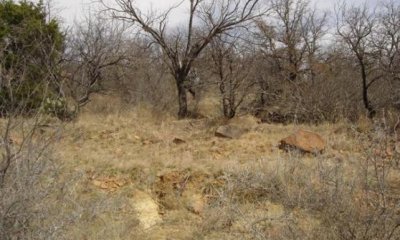
Sandstone Hill 26-33" PZ
Scenario model
Current ecosystem state
Select a state
Management practices/drivers
Select a transition or restoration pathway
- Transition T1A More details
- Restoration pathway R2A More details
- Transition T2A More details
- Restoration pathway R3A More details
-
No transition or restoration pathway between the selected states has been described
Target ecosystem state
Select a state
State 1
Tallgrass Savanna State - Reference




Description
The reference plant community for the Sandstone Hill ecological site is a tallgrass oak savanna. In reference conditions, the Tallgrass Oak Savanna Community is a very productive site and is very resilient. Little bluestem is the dominant species, but other tallgrasses comprise a significant part of the plant community as well. Sideoats grama is the dominant midgrass. Shortgrasses such as buffalograss and curlymesquite are also present. A wide variety of perennial forbs occur on this state in the reference state. Trees, shrubs, and vines are a key component of this savanna plant community. Total crown canopy of trees and shrubs is generally less than 10%, but may reach 15% in some situations. Annual production ranges from 2300 to 4000 pounds per acre.
The Little Bluestem Dominant Community is noted that during the early stages of departure from the original plant community, little bluestem will initially act as an increaser on this site. As Indiangrass, big bluestem, and switchgrass begin to decline, they are gradually replaced by the more aggressive and disturbance-resistant little bluestem. In this phase, little bluestem totally dominates the site and may comprise as much as 60% of the entire plant community. Species composition of midgrasses, forbs, trees, and shrubs generally remains stable. Annual production is not significantly reduced, but species diversity and overall quality are. Production ranges from 2100 to 3800 pounds per acre.
The Midgrass Savanna Community occurs as little bluestem continues to remain a significant part of the plant community, and Indiangrass, big bluestem, and switchgrass plants are usually still present. As they continue to decline, they are replaced by various midgrass species. Forbs increases noticeably on the site. Native shrubs such as sumacs, lotebush, pricklyash, pricklypear, and yucca begin to increase in density and canopy. Mesquite and juniper begin to encroach from adjacent sites. Canopy of trees and shrubs varies from 10% to 20%. Annual production ranges from 1700 to 3000 pounds per acre.
Submodel
Description
In the Midgrass/Shrubland Community, the tallgrasses are almost completely eliminated and sideoats grama is severely reduced in this state. Midgrasses such as silver bluestem and dropseeds as well as shortgrasses are the dominant grasses. Forbs increases significantly and broomweed invades the site. Trees and shrubs create a midstory canopy below the overstory of oaks, elms, and other trees. Total canopy ranges from 20-40%. Total annual production ranges from 1400 to 2200 pounds per acre.
Submodel
Description
At this stage of Oak/Elm Woodland Community, the overstory and midstory canopy of trees and shrubs exceeds 40%. Herbaceous vegetation is primarily early successional midgrasses and perennial forbs, as well as shortgrasses, sedges, and annual forbs and grasses. The original herbaceous plant community has essentially been eliminated at this stage. All of the original tree and shrub species still exist, but most of them have increased in frequency of occurrence and canopy because of the lack of fire. Invading trees and shrubs may become the dominant species in many instances. Annual production ranges from 1000 to 1400 pounds per acre.
Submodel
Mechanism
Abusive grazing pressure, no fires, and no brush management leads the transition from the Tallgrass Savanna State to the Shrubland State.
Mechanism
With the implementation of various conservation practices including Prescribed Grazing, Prescribed Burning, Brush Management, and Range Planting, the Shrubland State can be restored to the Tallgrass Savanna State.
Relevant conservation practices
| Practice | External resources |
|---|---|
|
Brush Management |
|
|
Prescribed Burning |
|
|
Prescribed Grazing |
|
|
Range Planting |
Mechanism
With abusive grazing practices, no fires, and no brush management, the Shrubland State will transition into the Woodland State.
Mechanism
With Prescribed Grazing, Prescribed Burning, Brush Management, Seedbed preparation, and Range Planting, the Woodland State can be restored to the Shrubland State.
Relevant conservation practices
| Practice | External resources |
|---|---|
|
Brush Management |
|
|
Prescribed Burning |
|
|
Prescribed Grazing |
|
|
Range Planting |
Model keys
Briefcase
Add ecological sites and Major Land Resource Areas to your briefcase by clicking on the briefcase (![]() ) icon wherever it occurs. Drag and drop items to reorder. Cookies are used to store briefcase items between browsing sessions. Because of this, the number of items that can be added to your briefcase is limited, and briefcase items added on one device and browser cannot be accessed from another device or browser. Users who do not wish to place cookies on their devices should not use the briefcase tool. Briefcase cookies serve no other purpose than described here and are deleted whenever browsing history is cleared.
) icon wherever it occurs. Drag and drop items to reorder. Cookies are used to store briefcase items between browsing sessions. Because of this, the number of items that can be added to your briefcase is limited, and briefcase items added on one device and browser cannot be accessed from another device or browser. Users who do not wish to place cookies on their devices should not use the briefcase tool. Briefcase cookies serve no other purpose than described here and are deleted whenever browsing history is cleared.
Ecological sites
Major Land Resource Areas
The Ecosystem Dynamics Interpretive Tool is an information system framework developed by the USDA-ARS Jornada Experimental Range, USDA Natural Resources Conservation Service, and New Mexico State University.




